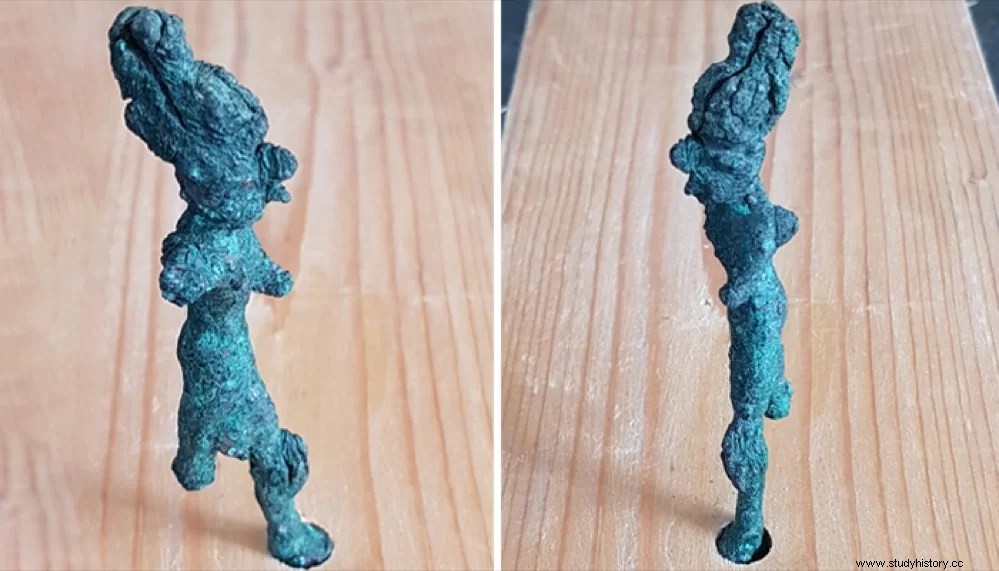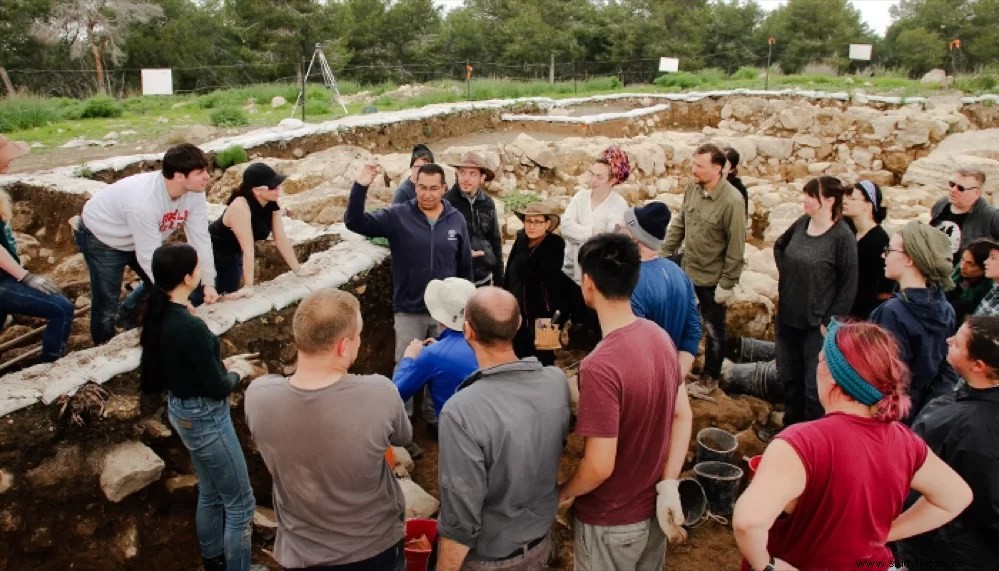Ancient artifacts dating back 3,300 years have been unearthed by archaeologists from Australia's Macquarie University in a long-lost city believed to be linked to King David.
A rare figurine of the Canaanite god Baal in an attitude of beating his enemies, another of a bronze calf, two seals and decorated Canaanite and Philistine pottery from the 12th century BC. they were discovered in Khirbet el-Rai, in Israel, by a team from the University during the latest excavation campaign, in February 2020.
Especially interesting is the partially intact figurine of the god, who wears a tall hat and would have had his right arm raised and his other arm extended in front, possibly holding a weapon such as a spear.

Archaeologists believe that this site was once the ancient Philistine city of Ziklag mentioned in the Book of Samuel in the Bible. Its discovery was announced in July 2019, and a first dating dated it back to the beginning of the 10th century BC.
According to the Bible, Ziklag was given to David, famous for having killed the giant Goliath, by the Philistine king Achish of Gath while he was fleeing from King Saul. Later, after Saul's death, David became king at Hebron and Ziklag remained in the hands of his nascent kingdom of Judah.
The team's excavations have revealed layers from the 12th-10th centuries BC, covering the Canaanite foundations of the city. They have also found evidence of a major fire, burnt mud bricks, white ash, burnt wood, and numerous destroyed pottery vessels, consistent with the biblical account of the city being raided by the Amalekites, the main enemies of the Israelites. /P> 
Scholars have been divided as to the location of Ziklag, with as many as 12 potential sites proposed. But Garfinkel and co-director Dr. Kyle Keimer, Senior Lecturer in the Archeology of Ancient Israel at Macquarie University, say the evidence gathered gives Khirbet el-Rai the best chance of being the lost biblical city.
The site has produced a wealth of artifacts, including rich finds of Canaanite pottery, vessels used to store oil and wine, a flint deposit used for sickle blades, inscriptions, oil lamps, a portable shrine, and even a large stone point. bronze.
The team has discovered a series of overlapping monumental buildings, as well as multiple domestic buildings. The first of the monumental buildings was destroyed, preserving a room full of burnt bones and cult objects, some of which have their origin in Cyprus. The architecture and small finds indicate that a sophisticated society with international connections existed at that time (the Iron Age), rather than the modest scattered settlements that scholars previously thought.
